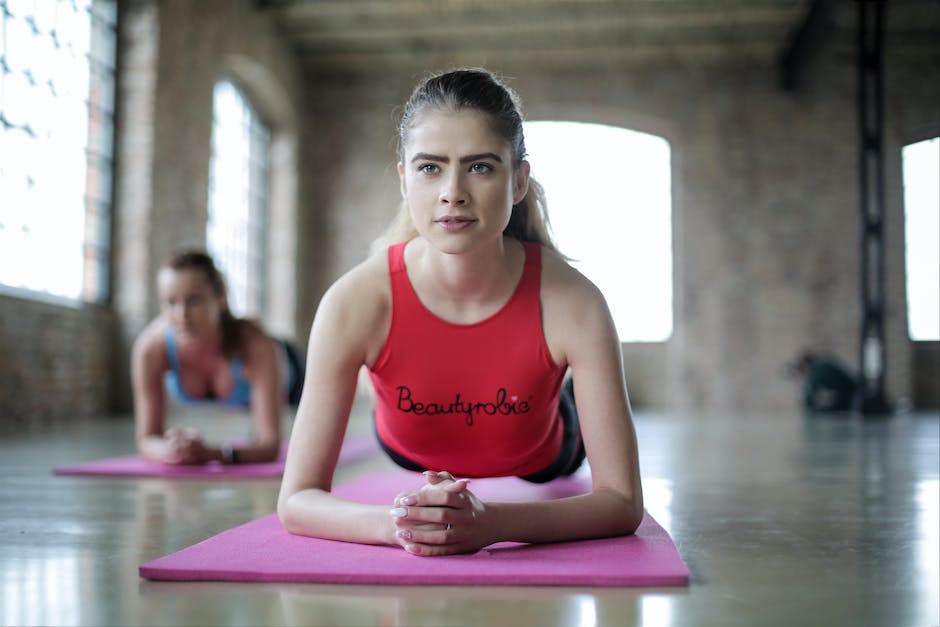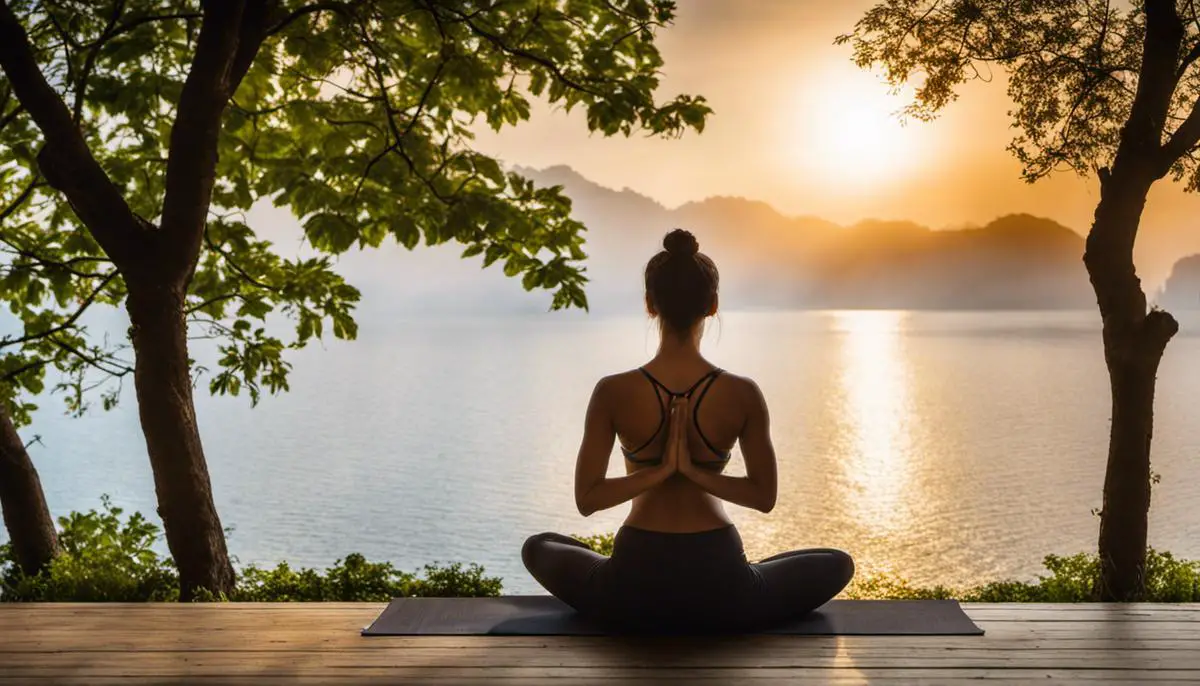Embarking on a journey into the world of Yoga invariably includes the exploration of its fundamental principles, as well as the mastery of some challenging physical postures. This journey offers the transformative power of ancient practices like Pranayama (breathing), Dhyana (meditation), and the ethical disciplines of Yamas and Niyamas, which underpin the rich tapestry of yogic practice. Furthermore, Yoga harnesses both the inward and outward strength, allowing practitioners to demonstrate and improve these by engaging with advanced poses such as the one-foot yoga pose. This pose, despite its apparent complexity, can be practiced with taught skill, focus, balance, and the correct technique.
Understanding the Basics of Yoga
Embracing the Serenity: Fundamental Elements and Principles of Yoga
Delving into the world of yoga seems like embarking on an exciting new journey. Yoga is more than just a hobby; it’s a lifestyle imbued with rich history, humility, and a serene sense of depth. But what anchors it as such a captivating form of exercise, meditation, and well-being? Let’s entwine ourselves in the intricate elements and principles of yoga.
Firstly, it’s essential to recognize that yoga is not just a physical practice; it’s also a philosophy. This philosophy stems from the 8 limbs of yoga, also known as Ashtanga, outlined by sage Patanjali in his Yoga Sutras. These limbs are the backbone that yoga leans on, consisting of:
- Yama (ethics)
- Niyama (self-discipline and spirituality)
- Asana (posture)
- Pranayama (breath control)
- Pratyahara (withdrawal of senses)
- Dharana (concentration)
- Dhyana (meditation)
- Samadhi (union with the Divine or true-self)
The physical aspect of yoga, which is the most recognized portion, includes the postures or poses, known as Asanas. Contrary to typical understanding, Asanas are not merely about flexibility or strength. More than that, it’s a connection of mind, body, and spirit. Each Asana, from the gentle Child’s Pose to the challenging Warrior series, carries its unique benefits and energy alignment to foster physical health and spiritual growth.
Next comes Pranayama or breath control. Pranayama is a set of exercises designed to control breathing and enhance energy flow within the body. Controlled breathing helps calm the mind, reduce stress, and improve focus. It’s a cornerstone of the yoga practice as the breath acts as a bridge between the mind and the body, instilling a profound sense of peace and relaxation.
Then you have the sweet icing on the yoga cake, which is meditation or Dhyana. Often nurtured toward the end of a yoga session, meditation is the act of continuous focus and a conscious attempt for the mind to delve into itself. It’s an excellent tool for cultivating a sharper, calmer mind and awakening a sense of awareness and understanding.
Lastly, it’s essential to touch on the aspect of Ahimsa, or non-violence, one of the five Yamas. Ahimsa in yoga is not only about physical non-violence but also abiding by a mental state that avoids harm and exudes compassion. It is a principle that yogis seek to imbibe in their daily lives, extending beyond the mat into everyday interactions and decisions.
Yoga is a picturesque blend of movement, silence, strength, and softness. It’s a practice that starts the moment a yogi steps on the mat and continues as they navigate through their day. While it may seem like a lot to understand initially, immersing oneself in the practice illuminates the real essence of yoga – harmony between the body and mind, the self and the universe, the microcosm and the macrocosm. Whether you’re a seasoned practitioner or a beginner, just remember to breathe, center your thoughts, and let the voyage unravel at its own pace.

Working on Balance and Strength
Bold strides towards increasing balance and strength for more fulfilling yoga practice
Sublime the art form of yoga is, and as practitioners of this centuries-old discipline, we know that there’s always room for improvement. A deeper yoga practice tends to connect us with our bodies and intuition, allowing for a finer understanding of balance and strength, and how to enhance both.
To begin with, gaining better balance in yoga usually goes beyond the physical. Sure, our muscles play a major role, but it’s our body awareness that makes all the difference. This perception of body movements, also known as proprioception, can be strengthened by practicing yoga barefoot. Connecting your bare soles to the ground while executing asanas delivers valuable sensory feedback that aids in refining your balance.
In practical terms, challenging balancing yoga poses, like Natarajasana (Dancer’s Pose) or Virabhadrasana III (Warrior III), can also be terrific workouts for your balance-enhancing muscles. Practice regularly, and remember that it’s perfectly fine to wobble or even lose balance. Like the cycles of life, yoga too has its ups and downs. It’s the process of regaining balance that conditions both body and mind.
Now, what’s yoga without strength? A strong core forms the very foundation of this age-old practice, fostering stability for all your asanas. Enter the Plank Pose (or Kumbhakasana). Holding this pose daily, starting from a few seconds and gradually extending to a minute, can remarkably enhance your core strength. Other beneficial asanas include Chaturanga Dandasana (Four-Limbed Staff Pose) and Navasana (Boat Pose), which strengthen the arms and abdominal muscles respectively.
To imbibe true yoga strength, focus on flowing between the poses instead of merely holding them. ‘Vinyasa‘ which means “to place in a special way,” emphasizes moving from one asana to another while aligning breath with movement. This flowing sequence not only boosts your physical strength but also cultivates a sense of inner balance and serenity.
Always remember, proper alignment in each pose aids in avoiding injuries and maximizing the benefits of this strength-based practice. Therefore, learn the right techniques from a knowledgeable yoga instructor who can guide you on your journey toward enhanced balance and strength.
Balance and strength in yoga is not merely a physical feat, but also an inner journey toward self-awareness and resilience. Remain attuned to your body’s signals, respect its limitations, and commit to a regular practice. Incorporate the above-mentioned tips and watch how your yoga practice transforms—even seeming like second nature. As we continue to delve deeper into yoga, let’s do so with both grounded strength and elevated spirit!

Learning the One Foot Yoga Pose
Diving into advanced yoga poses, such as the one foot pose, requires a complex blend of strength, flexibility, balance, and concentration. Establishing these elements is a journey in itself, fitting perfectly into the broader scope of yoga as a path to connection and mindfulness. Let’s glide into examining the key steps and techniques to achieve the one foot yoga pose, also known as Eka Pada Pranamasana.
Before embarking on any new yoga pose, it’s essential to warm up to increase the circulation and enhance the flexibility of the muscles. In the case of one foot pose, focusing on leg mobility and strength is vital. Leg swings, lunges, and squats can be incorporated into the warm-up routine. Warm up the hip joints as well since these are going to play an essential role in maintaining the balance.
Step-wise, achieving Eka Pada Pranamasana starts with mastering the classic tree pose (Vrikshasana). Find a flat surface, breathe in, and stand tall, as though you’re the mountain pose (Tadasana). Shift the weight to the left foot and slowly raise the right foot off the floor. Bend the right knee and place the right foot on the inside of the left thigh.
Steady your gaze at a fixed point ahead, which yogis call a ‘drishti.’ The drishti aids in maintaining balance, with the act itself serving as a sort of moving meditation. Once you feel stable in the tree pose, bring your palms together in a prayer position at the heart (anahata) chakra. Shift your raised foot higher up the standing leg if you can, just don’t rest it on the knee of the standing leg – this could cause injury.
Adding the one foot aspect involves lifting the grounded foot so that only the ball of the foot is touching the ground. The balance here shifts from whole foot to a single point, increasing the challenge. Use your core muscles, glutes, and leg muscles to help maintain this position. Visualizing yourself rooted through the ball of your foot and drawn upwards to the sky can aid in establishing both your physical and mental balance.
In Eka Pada Pranamasana, drawing the body’s energy towards its midline helps stabilize the pose. Tighten your core, hold for several breaths, and then slowly bring your heel back down to the ground. Repeat on the other side.
Remember, the one foot pose requires a lot of practice, patience, and persistence. Some days it might seem near impossible, even if you’ve achieved it before. This is normal and all part of the journey. Keep practicing, maintaining consistent breathwork (Ujjayi Pranayama can be particularly useful), and you’ll soon experience the joy of holding Eka Pada Pranamasana successfully. Keep celebrating each step towards achieving this pose!
Undertaking this challenge not only fosters greater physical agility but also nurtures self-discipline, balanced energy, and a resilient spirit. Incorporate these insights into your practice, and let the rhythm of yoga take you into the incredible journey of Eka Pada Pranamasana.

Photo by dearseymour on Unsplash
Embracing Yoga is an ongoing journey that fosters both physical and spiritual growth. The balancing act that is the one-foot yoga pose represents a milestone that manifests this delicate intersection. However, this accomplishment is achievable through consistent practice, fostering balance and strength, learning proper postural techniques and understanding what Yoga truly entails. Progress in Yoga is gradual and organic, appreciating the incremental steps taken towards achieving advanced poses will lead to a fulfilling and enriching Yoga practice. Remember that Yoga is not merely about mastering the physicality of the poses but also about harmonizing the mind, body, and spirit in the process.

